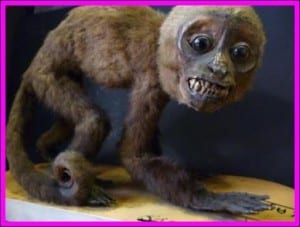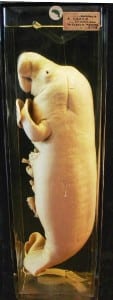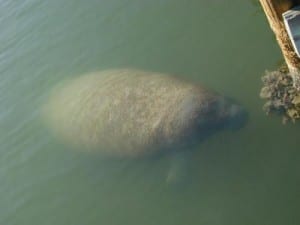Specimen of the Week: Week 137
By Jack Ashby, on 26 May 2014
 The cost that museums have to dedicate to caring for individual objects is determined by a number of factors. If it’s particularly fragile or susceptible to the elements it might need to be housed in a controlled climate or stored in specialist materials. If it’s particularly desirable it may need souped up security measures. If it’s particularly large then museums have a whole feast of troubles – one giant object will take up the same space as dozens of smaller ones; they are very difficult to move; and they require huge amounts of equipment to prepare and store. This is why you don’t get 30m blue whales stored in jars – just think how much alcohol that would take, and how thick the glass would have to be.
The cost that museums have to dedicate to caring for individual objects is determined by a number of factors. If it’s particularly fragile or susceptible to the elements it might need to be housed in a controlled climate or stored in specialist materials. If it’s particularly desirable it may need souped up security measures. If it’s particularly large then museums have a whole feast of troubles – one giant object will take up the same space as dozens of smaller ones; they are very difficult to move; and they require huge amounts of equipment to prepare and store. This is why you don’t get 30m blue whales stored in jars – just think how much alcohol that would take, and how thick the glass would have to be.
Fortunately for natural history museums, most big animals start off pretty small, so there’s a way we can cheat the system. If we use baby animals in our collections we can avoid the problems caused by largeness, and still have the species represented. This week’s specimen of the week is…
**The fluid preserved infant manatee**
1) Manatees and their relatives dugongs are the world’s only herbivorous marine mammals. Because of this fact and their giant size (400-1500kg) they are sometimes called “sea cows”. There are three species of manatee – the West African, West Indian, and South American. Regular visitors to Specimen of the Week will not be surprised to learn we don’t know what species this specimen is. Detailed information in historic university zoology museums is notoriously poor, and data we now consider vital – such as specific identification and date and location of collection – was not a priority for our predecessors who probably just wanted to show their students what a typical manatee looked like.
2) As suggested in the intro, preserving a 4.5m long manatee in fluid would practically be beyond the scope of a Perspex or glass jar. Museums which have that much space and systems to deal with that much volatile alcohol would need to store them in metal tanks, which make them rather hard to display. If you’ve visited the giant squid in the Natural History Museum’s tank room you’ll understand why that kind of thing is unusual. It is probably for this reason that we have an infant manatee specimen. It still has its umbilical cord which suggest it’s a foetus or newborn. Manatees gestate their young for 12-14 months.
3) All extant manatees and dugongs (the order Sirenia) live in the tropics where they graze on plants – mainly sea grasses – underwater. They will use their fins to dig up roots and have constantly growing molars to deal with the rough plant material which constantly grinds them down. Despite the “sea cow” moniker, they use hind gut fermentation like horses to digest their food – symbiotic bacteria live in their stomach and break down cellulose.
4) Manatees and dugongs are not closely related to other marine mammals like seals and dolphins, though they did appear around the same time, around 40-50 million years ago. Their closest living relatives are elephants. Sirenians, like dolphins and whales, have what I consider to be the best evidence of evolution you are likely to see in a museum: They have a pelvis. That’s not so remarkable if you’re an average mammal, but manatees and dugongs don’t have legs – just one pair of front flippers which are modified arms. Their pelvises are splints of bone floating in soft tissue. Why would they have a pelvis, then, if they didn’t evolve from animals with legs?
5) All three species of manatee are considered Vulnerable on the IUCN Red List. They are threatened by basically every common threat that animals face – habitat degradation, pollution, hunting, changing temperatures and boat collision. This last one is particularly significant for the best known populations, and is also true for dugongs. As they are particularly large slow moving lumps that rest just below the surface, particularly in murky mangroves and estuaries, they are hard to spot at a distance and avoid. They also don’t move fast enough to get out of the way. It is very common to see dugongs and manatees with scars from propellors and hulls.
6) Bonus self-indulgent story: One of the most exciting wildlife watching experiences of my life was with manatees – I was on holiday on an island in the Gulf of Mexico, spending 90% of my free time watching manatees and dolphins in the mangroves which covered the side of the island which faced mainland Florida. In one of my brief spells on the white sand/blue sea side of the island, whilst playing Frisbee in the sea, I spotted 6 massive dark shapes moving through the water. After a brief panic that they were sharks, then dolphins, they surfaced and I could see they were manatees. They swum within 1m of me to take a close look (or maybe to play Frisbee). I could barely breath.
Jack Ashby is the Manager of the Grant Museum of Zoology.
 Close
Close



